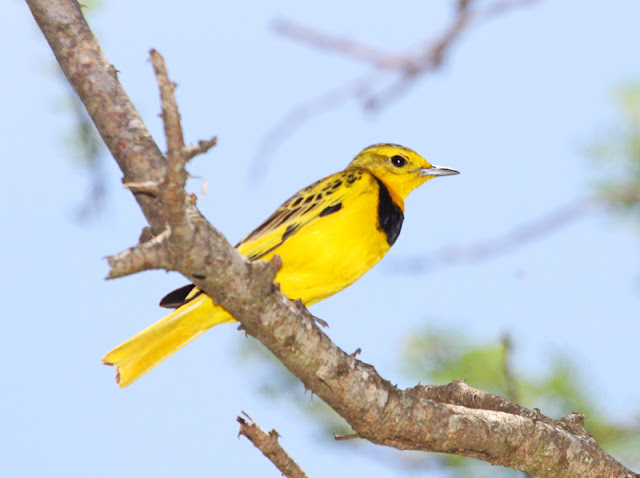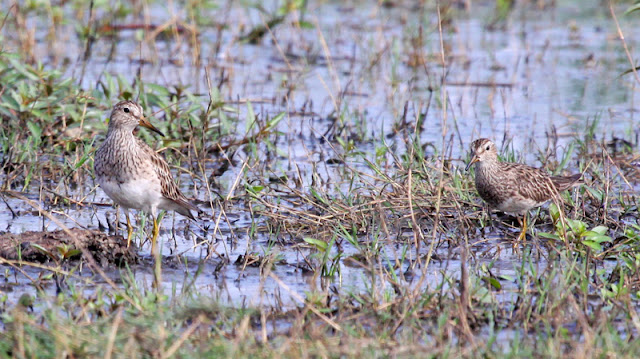 |
| Hadeda Ibis |
When my alarm went off at 4am on Saturday it felt as if I had been hit by a bus sometime during the night. Unfortunately I could not roll over and go back to sleep as my birding bud JP Le Roux was on his way to fetch me to go birding at Marievale. It was to be his first visit to this wetland reserve on the Blesbok Spruit (stream) in the south of Johannesburg and I could not even afford to press the snooze button!
We arrived at Marievale to find that the recent rains which had caused havoc to the roads in Pretoria had created a bird paradise by flooding the grasslands surrounding the spruit (including the access roads). Our main target birds were Slaty Egret, Baillons Crake and Black-winged Pratincole of which we only got one, the Baillons Crake which was spotted sauntering across the flooded road about 5m in front of us....I was too slow for a photo!
 |
| Herons on the causeway road |
African Rail were calling everywhere and we had numerous good views of them as they moved across the causeway road in front of us.
 |
| African Rail |
 |
| Red-knobbed Coot |
 |
| Reed Cormorant |
 |
| Squacco Heron |
Squacco Herons were probably the most common heron on the day with Black Herons following a close second. We had good views of a Little Bittern flying over some open water.
 |
| Black Heron |
 |
| Cattle Egret in breeding plumage |
Malachite Kingfishers were taking advantage of the flooded roads and we found quite a few sitting on reeds watching for minnows in the shallow water. These are stunning little birds which you can never grow tired of seeing.
 |
| Malachite Kingfisher |
Raptors were few and far between, we only saw a few Black-shouldered Kites and a female ring-tailed Harrier which did not stick around for a proper ID. Amur Flacons were hunting over the area in a large flock.
 |
| Sub-adult Black-shouldered Kite (I love the "eyelashes") |
 |
| Adult Black-shouldered Kite with prey |
In the flooded grassland were numerous weavers, bishops and widows including Red-shouldered Widow (which is fairly rare for Gauteng) and a few Common Waxbills. A special sighting was of a couple of pairs of Orangebreasted Waxbills amongst the seedeaters.
 |
| Orange-breasted Waxbills |
On the way back to the main gate we stopped at the last hide (Hadeda Hide?) which was very quiet as far as birds were concerned. There were two photographers there with huge 600mm lenses and no subjects to photograph. After a while we got photos of a Southern Masked Weaver and a Lesser Swamp Warbler crossing the reeds in front of us !
 |
| Lesser Swamp Warbler |
 |
| Southern Masked Weaver |
We had seen a few Mongooses in the reserve during the day, Slender, Yellow and at the last hide there had been a Water Mongoose crossing right in front of the hide but he took off as I moved to show the others occupants. So not a bad day for mammals either.
Waders numbers were low compared to previous visits, probably due to the higher water levels. We saw Wood Sandpipers (very common), Ruff, Marsh and Curlew Sandpipers. African Snipe were common. To round off a great days birding we got stuck in some really sticky mud and had to be extracted by a kindly farmer with his tractor. I added some Avocet to the days list while JP went off to fetch the cavalry!
 |
| Wood Sandpiper |
With my annual leave started, I will be heading off to the coast on Hoiliday in a few days so watch this space for some more exciting South African birds early in the new year. Happy Holidays!!
























